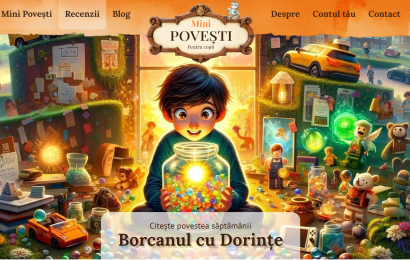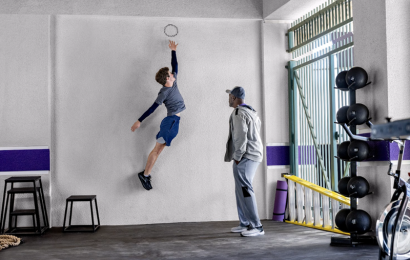Georgiana Dragomir (Grapefruit), MIT Global Entrepreneurship Bootcamp Journal – Part II
We are coming back to you with the second part of Georgiana Dragomir’s (Managing Director Grapefruit) written story about her MIT Bootcamp experience. You can find the first chapter here.
Day 2 (Monday)
On Monday morning, I decided to talk to Pilar, the head of the Biomakers team. It was a team I resonated with personally, but its members came from very different professional areas: Angela Scott had been in the small team that turned Sci-Fi into reality by cloning the first mammal – the sheep Dolly; Frank Xinyue, “Biosensor Scientist” at the Missouri University; Pilar Zarate, Social Entrepreneur and Marketing specialist with an extensive experience in design; Carlos Javier, Product Manager who had worked in an e-waste recycling company; Djamila Yousef, psychologist, hypnosis therapist and student at Harvard Business School. This intimidated me at first but then I pulled myself together and said to myself: “I may not know bio-engineering, but you guys don’t know user experience either, so there goes nothing.”
I spoke to Pilar and so, in the second day of Bootcamp, at 7 AM I was part of a different team. It turned out that the mentors’ advice about choosing one’s team was very important and true.
During the second day we had to define the actual problem (that we were trying to solve), to describe it with as many details as possible and to validate it through interviews with people from our main target zone.
The problem we first defined was: the difficulty in the diagnosis of mentally impaired children. We thought we could use a gadget that could detect symptoms in children early on and indicate if they could really suffer of mental illnesses or not. Djamila confirmed that this problem is real and that we could develop an algorithm that could help us solve it.
After a long series of interviews, we realized that our problem could have severe ramifications that we hadn’t thought of to begin with. We realized people would see a specialist at the first signs of illness and they wouldn’t purchase a gadget or app as an intermediary step. Moreover, there had been cases in which families refused to accept a diagnosis even when given by a specialist.
If the problem seemed simple at the beginning, the interviews revealed that there were dozens of associated problems that we had to solve before a gadget, app or algorithm could come in handy. What actually buried the idea were the words of the mentor Bill Kirkley, who spoke about a misdiagnosis: Guys, you can ruin families’ lives if you do this. Who would have thought so far ahead?
In spite of the interviews and the conclusions, Djamila, the main supporter of the idea insisted that we went on. She had made a mistake that Marius always told us to avoid: “She fell in love with the solution, not the problem.” Again, the compatibility of the team members spoke loud. Djamila left our team to join another one with whom she worked much better. I couldn’t judge her, since I had done the same thing before and I turned out to be right.
So we decided to move on. Where to? No one knew. We had a few sessions of discussions and brainstorms, then at 3 AM we finally reached a consensus. We were set to revolutionize the medical industry and wouldn’t back down until we did just that.
The second problem we tried to solve (after rephrasing it several times) was the following: Current methods for analyzing biomarkers in cell therapies are inefficient. Nowadays it takes from 6 hours to 5 days to interpret the test results or a cancer patient and one must follow 5 very complicated steps. We decided to explore this problem and see if it could be done in a shorter time. The solution we found would help interpret the data much easier, so that the patients would receive the correct treatment faster.
Days 3 and 4 (Tuesday and Wednesday)
We spent Tuesday and Wednesday discussing the many aspects of the problem we were trying to solve and how we could solve it. Wednesday evening, we were finally ready to get to work and make our presentation for Demo Day (the final presentation, in front of the investors), but we realized that for the past 2 days we had been talking about different problems and solutions.
Some of us were talking about a device, a gadget that we would develop, while others were thinking about selling a software license. The difference was huge. Exhausted, we called upon one of the mentors to help us get onto the same road. Together with the mentor we managed to establish what we wanted to do. After that it was funny to see how for two whole days, five people were talking five different problems and five different solutions.
Lesson no. 2: make sure that your team understands the same thing you do. Write it down on the whiteboard, discuss, repeat as many times as necessary. Anything that is unclear is disastrous for the long term.
One of the most important steps in a startup is Primary Market Research (PMR). This implies interaction with at least 50 people who face the problem you are trying to solve. This step requires as many interviews with possible clients and users as possible and unless it is thoroughly made, the chances for success are minimal.
Some of the teams changed their ideas several times during Bootcamp, because PMR did not validate their initial problem. One of the teams for instance had done 300 interviews in the first two days. You may be sure that the problem and solution you suggest are valid and many customers would purchase it. After the first interviews, however, you might be surprised to find that people face different problems or they are not interested in the solution you came up with.
In our case, the issue was the field we targeted. Where could we find so many engineers, lab assistants, doctors or lab managers to interview on such a short notice? We were close to the end of day 4 and had done only six interviews. The mentors and organizers discovered this situation and got alarmed. They almost stopped the Bootcamp because this step was paramount and we could not move forward without completing it. Finally, we reached out to all our acquaintances and connections from MIT, and managed to get 15 interviews.
The good news? The problem was real and the customers would have paid a great deal to have a solution.
Lesson no. 3: do not skip certain steps in a process just because they are difficult to achieve. If you have an idea for a startup, it is mandatory to speak in advance with potential customers and validate the problem. Afterwards, sketch up the solution and redo the validation process.
Day 5 (Thursday)
One day before Demo Day, on Thursday, we started working on our presentation and go through the rest of 20 steps of the Disciplined Entrepreneurship process. We highlighted the User Persona, Total Addressable Market, Beachhead Market, Value proposition, Define the Core, See the competition, Go to Market plan and Financial Projections.
Defining the financial part was extremely difficult and complex. We made 10-year provisions and had to be very exact on our request, “Ask”, to the investors. In order to complete this step, we had a lot to learn from our mentors: from basic finance principles down to the smallest details, so we could establish a realistic budget. The challenge was great and it drew six of the mentors to our work room, each of them bringing a different view but at the same time offering us precious information.
Lesson no. 4: hear out as many views as you can and implement that which fits your pattern. There will always be feedback and advice, but you must take a final decision and go on with it.
Below you can view some slides from our final presentation for Demo Day. In only one day, we condensed all our work in a few slides, that we would present in front of our colleagues, mentors, professors and investors.
After finishing our presentation and financial projections, we made a mock presentation to the mentors.
Disaster!
They completely discarded us. After working until 6 PM on the presentation, we had to start over, remake the presentation and financial projections, which took us until 3 AM. We were exhausted when we finished the presentation version 2 and then Basit, our mentor, thought we should change the pricing mode. It would have completely changed the business plan. We decided together that it was a good idea, but none of us had the energy to remake the business plan from ground zero, six hours before Demo Day.
Day 6 (Friday) – Demo Day
At 7 AM we went to the hall where Demo Day would take place. I met with Angela and started rehearsing. She would present the scientific side, while I had to speak about the business plan (Tam, BHM, Go To Market, financial projections etc). We rehearsed several times, before 9 AM, when Demo Day officially started. Our team was the first to present. We had 10 minutes for the presentation and 5 minutes for questions from the investors. We were advised to finish the presentation as quickly as possible, so that we could receive more questions and raise the engagement of the audience and investors.
It was both good and bad that our team spoke first. The good part was that we did not stress out watching the other teams speak, while waiting for our turn. The bad part was that we did not know what questions the investors would ask and how the discussions would go from there on.
I was so nervous that I cannot even remember what I said during the presentation (lucky for me I saw the video recording later). I hesitated for a second while answering to an investor, even though I knew the answer, I froze and I could not speak. But I took a breath, finished my answer and it was ok in the end.
A few days after Demo Day, my team received an email from the MIT staff saying that an entrepreneur was interested in our idea. We are now in the discussion and analysis phase, but the best thing about it is that all five of us, the members of the team are on board and wish to work on this project further.
Overview and key moments
Each of the six days was so intense that we literally did not know which way to go and what to do. We had courses morning to evening, with 5 minutes’ breaks between them. We ate quick meals and spoke with our mouths full about a product we wanted to develop. After that, it was hard work along with the team, from 7-8 PM to 3-4 AM, 2-3 hours of sleep then start over. We had numberless meetings with the mentors, professors, bootcampers and interviews with specialists, face-to-face or over Skype. Dozens of boards were written, erased and written all over again, while debating problems and discussing solutions inside out.
I am close to the end of the story and I want to confess that many sacrifices were made so that I could participate in this program. The financial investment was around EUR 10 000. Moreover, there were many aspects that I had to plan with great care, before leaving behind my children and father, who was in the hospital.
Was is all worth the sacrifices? YES! It was a life changing experience and I can’t wait to implement everything I learned in Grapefruit and in my personal life.
It is difficult to describe in just a few words what this program is about and what changes it brings to the lives of the participants. But if anyone is interested in finding out more details about the MIT Bootcamp, I would be delighted to share my amazing experience with more people.













One thought on “Georgiana Dragomir (Grapefruit), MIT Global Entrepreneurship Bootcamp Journal – Part II”
Hi georgiana,
I’m actually applying for the bootcamp, when you said 10.000 EUro investment, is this about the travel fees etc. sorry for this question but i’m from a developping country and this kind of fees can be a big barrier.
Thanks.
Comments are closed.